Samsung Galaxy Tab 10.1 Review: The Sleekest Honeycomb Tablet
by Anand Lal Shimpi on June 13, 2011 5:07 AM EST- Posted in
- Tablets
- Samsung
- Tegra 2
- Galaxy tab 10.1
- Android 3.1
- Mobile
- NVIDIA
The Software
At CTIA Samsung mildly shocked the world by proclaiming that it would be bringing TouchWiz to its first Honeycomb tablet. Google had previously indicated that Honeycomb's UI would be unified and that hardware vendors wouldn't be skinning it, however it later backed off and said that Honeycomb was simply going to be good enough that no one would want to change it.
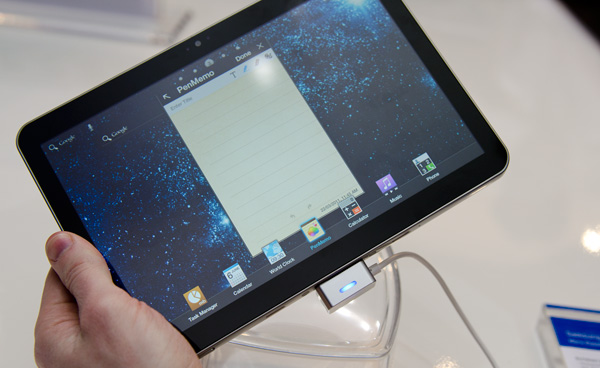
TouchWiz was originally slated to be a part of the Galaxy Tab 10.1 launch
The shipping version of the Galaxy Tab 10.1 (as well as the Limited Edition given out at Google IO) has all hints of the Honeycomb TouchWiz UI removed. There aren't even any Samsung specific widgets that come preloaded on the Galaxy Tab. I'm not sure if Google got tough with Samsung or if Samsung gave up on the idea of skinning Honeycomb after the 3.1 enhancements, but for better or for worse TouchWiz is gone.
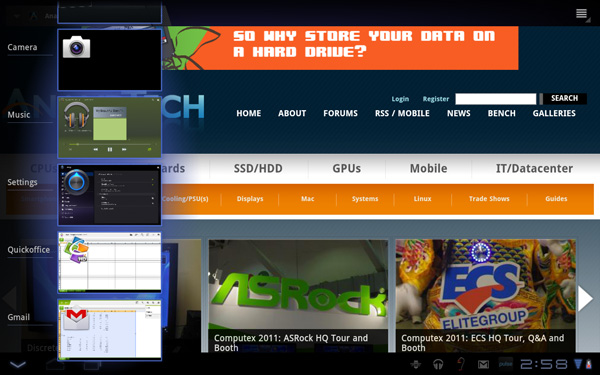
A scrollable recent apps list, a new feature of Android 3.1
One of the big features of TouchWiz on Honeycomb was supposed to be the ability to resize widgets, a feature that Google actually added in with the 3.1 update last month. The Galaxy Tab 10.1 ships with 3.1 from the factory bringing the total number of 3.1 devices up to three in the market today (ASUS' Eee Pad, Motorola Xoom and Samsung Galaxy Tab 10.1). Both the performance and feature enhancements that came along with the 3.1 update apply to the Galaxy Tab 10.1 so I won't go through them again here. If you weren't sold on Honeycomb before the update, the 3.1 bundle isn't going to be enough to make you a convert - but if you were interested in the OS beforehand, the point release makes the experience noticeably better.
Samsung opted for a more conservative default wallpaper on the 10.1 than ASUS did with the Eee Pad. It's impressive how much of an impact an animated wallpaper can have on performance. Samsung's simple switch makes the Galaxy Tab feel snappier by default. We're still a generation or two away from being able to have enough spare CPU cycles and memory bandwidth to throw away at things like frivolous UI elements.
There are still some odd hiccups that bother me about Honeycomb. For example, frame rate when bringing up the apps grid is still lower in portrait mode than in landscape. I also encounter far too many crashes on a regular basis. I still believe Honeycomb is fit for sale but it's definitely not a fully polished product.
While overall UI performance is much improved with 3.1 vs 3.0.1, it's still not perfectly smooth. For doing the handful of things that tablets work very well at Honeycomb definitely gets the job done, but ask too much of it and the experience quickly breaks down into something a lot slower.
Web browsing is still mostly pleasant. While Flash support is there, Honeycomb on a Tegra 2 is still far too sluggish to deliver even a netbook like experience. The problem ultimately boils down to screen resolution and memory bandwidth. At 1280 x 800 there are simply too many pixels to run most moderately complex Flash video while maintaining any semblance of a smooth UI.
Apps
With TouchWiz gone, there's still Samsung's own set of preloaded apps that come with the Galaxy Tab 10.1.
The Music Hub is Samsung's music store powered by 7digital. Tracks sell for between $0.99 and $1.49.
This next one is a bit odd. If you've purchased any Samsung device in the past (e.g. Samsung TV) you'll know the company is particularly fond of outfitting its hardware with its own custom app store. The Galaxy Tab 10.1 is not exempt from this treatment. The tablet comes with an app called Samsung Apps, which is a separate app store that presently has a whopping 6 titles, three of which are Angry Birds variants (Regular, Rio and Seasons). Thankfully all of the titles available in Samsung Apps, at least today, are all available free of charge.
Although the titles are free they are ad supported. Note that the apps themselves aren't delivered through Market so you'll need to enable the installation of non-market apps in order to actually use any of them.
Quickoffice is a basic word processing, spreadsheet and presentation package for Android with some basic MS Office compatibility. ASUS opted for Polaris on the Eee Pad but Quickoffice seems to work just as well.
The suite has some nice features such as one-touch text-to-speech when reading a Word document. We're not quite at the point where a Honeycomb tablet could replace a netbook but we're getting there.
Other than formatting issues, the biggest problem I had with Quickoffice was simply performance. Try to do too much (or forget about an app running in the background) and you're left with an app that just sits there waiting for a slice of CPU time that it seems to only get after decades (in CPU time) of waiting.
Samsung also includes Pulse newsreader (a magazine style RSS reader for tablets):
There's Android Movie Studio for basic video editing, primarily for video shot with the 10.1's cameras:
The performance complaints I mentioned above apply here to AMS as well. I had this app crash a good three times in succession while trying to edit together a simple video of footage I shot with the Galaxy Tab.
Of course there are the usual Android apps that we've covered as a part of Honeycomb (Gmail, Gtalk, Maps, Browser, etc...).
The Google supplied Honeycomb virtual keyboard is there however Samsung opts to use its own custom keyboard by default. I didn't have many complaints about Samsung's keyboard however I'm not a fan of the XT9 predictive text system Samsung's keyboard uses. I prefer the looks of the Samsung keyboard but the functionality of the stock Honeycomb offering.


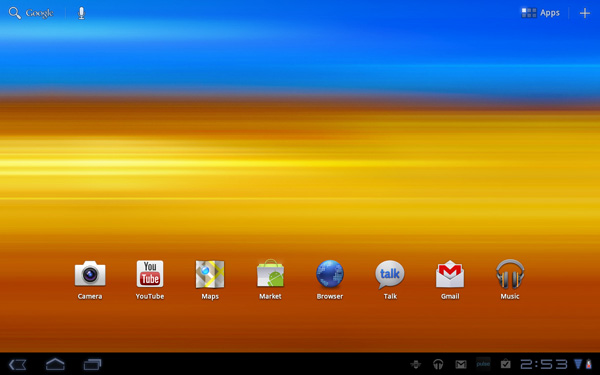
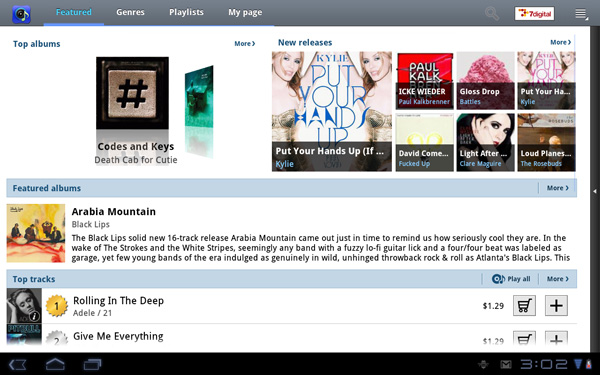
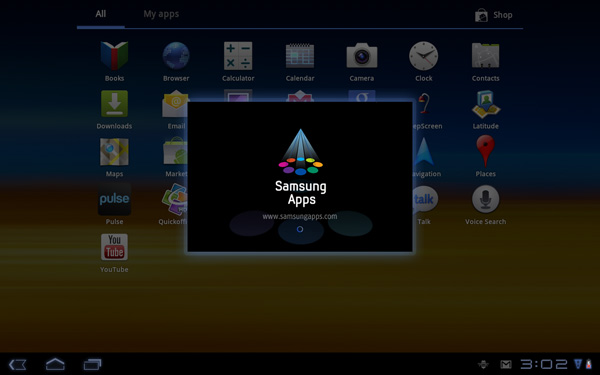
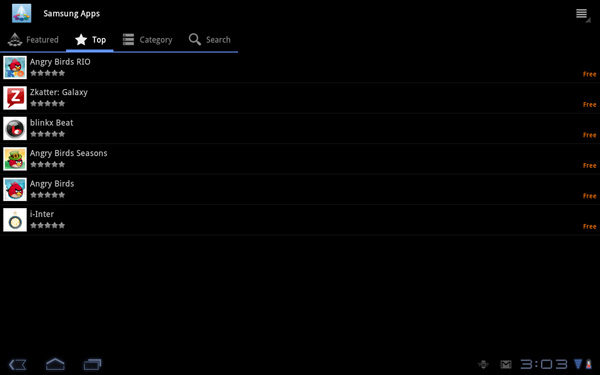
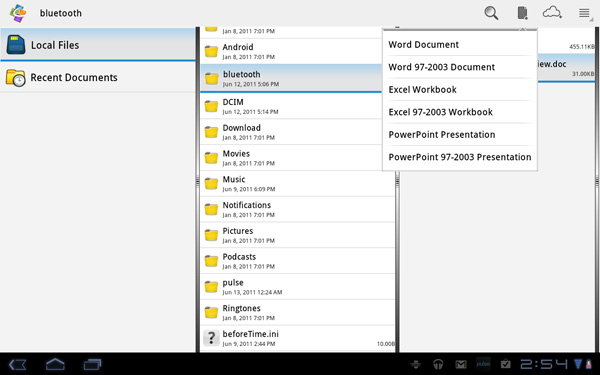
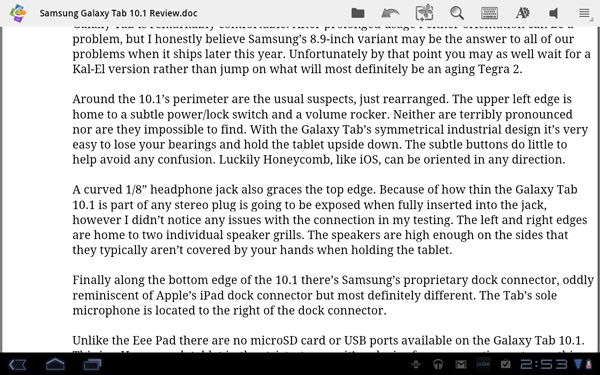
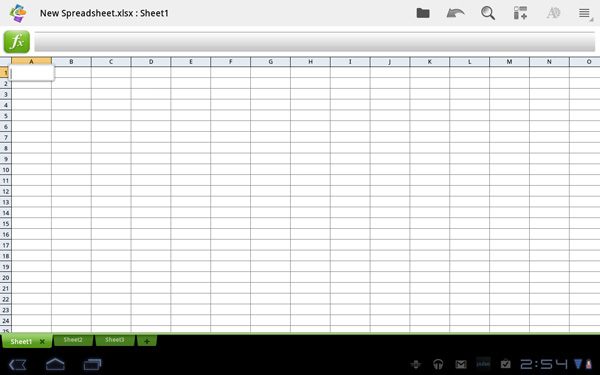
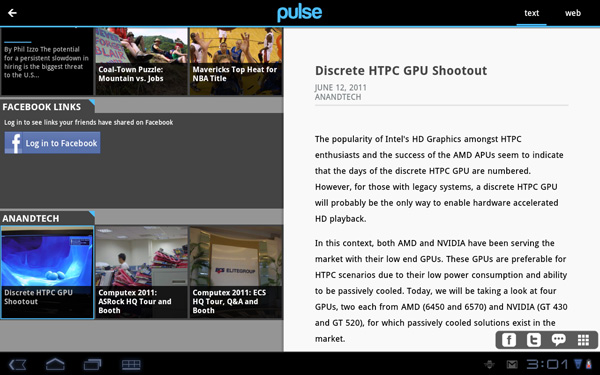

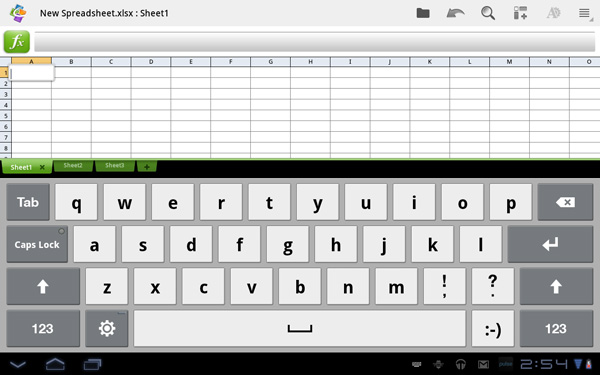








108 Comments
View All Comments
mikehunt80 - Monday, June 13, 2011 - link
Although it's true that the integer performance of Kal-El will be the same clock for clock as Tegra 2. The floating performance with quadruple thanks to the addition of Neon. This makes a big difference when working with complex surfaces, as well as decoding videos that aren't part of the hardware codec.Hrel - Monday, June 13, 2011 - link
I'm really sick of EVERYTHING being compared to the apple version of a similar product. Apple, IS NOT the golden standard. WAY WAY WAY back when the iphone first came out, ok sure. But ever since Android 2.0 was released Apple has been behind on every front.Start comparing the HTC's products or Motorola, like the Droid X. Asus E anything is a step above at least. Or better yet hold Apple to the standards of Archos. Superior build quality, superior functionality, more options and choices as well as being priced less than half as much. Yeah... can't even compete can you Apple. Fucking stupid people...
michael2k - Monday, June 13, 2011 - link
When the iPad can sell 3m in a month and #2 Acer sells 300k, Apple is still the golden standard.Conner_36 - Monday, June 13, 2011 - link
While Apple is selling the most tablets they are the golden standard, just like Google is the golden standard for search (find your own example of company with the significant market share is considered the 'golden' standard).vision33r - Monday, June 13, 2011 - link
When Apple is the one innovating, being 1st and selling millions. That's how gold standard is created.Show me which product Google released 1st other than search that was innovative and successful?
Android OS was conceived to battle iOS so Google can plant more ads without Apple's lock down.
ph00ny - Monday, June 13, 2011 - link
show me a single piece of hardware that apple has innovated that wasn't supplied by samsung, lg, etcBelard - Tuesday, June 14, 2011 - link
UH... what does that have to do with anything? First LG is really more of a brand than a manufacture. Samsung makes most of the LCD panels sold in the world... sound under dozens of names.Hate them or not... Apple did bring out the GUI computer, Smart phone and tablets to the consumer mass.
Jamestownsend - Tuesday, June 14, 2011 - link
Apple isn't a hardware company. Im more likely to call them a software/UI development company. Open any of their devices and you'll see stamps from other companies. they are what i call cherry pickers. they pick the best from everyone, combine it into a pretty case that they made themselves and sell it as an experience.fteoath64 - Wednesday, June 15, 2011 - link
Apple's magic is in their OS software. Their hardware components has been mediocre at best but their integration of the components into the design is their skill. Wrap this in easy-to-use UI/OS, they have a compelling product, hence, they can set the "Gold Standard" because they can cater for 80% of the people out there even with a higher price point.robco - Monday, June 13, 2011 - link
Apple was making the iPhone when there was no Android. They forced everyone else to step up their game. They've been pretty good about releasing new versions that adds new features. They didn't have everything out of the starting gate, but what they put in worked very well.This is where Apple and Google diverge into two opposite directions. Google has made web apps in the past. You can quickly add new features and tweak things. Their products are almost in a state of perpetual beta. GMail was labelled a beta for years. They have no problem adapting new technologies, even if they aren't polished. Apple OTOH tends to pick and choose what it will implement more carefully and won't put a feature into a product until it meets their standards. If you want to be bleeding edge and buzzword-compliant, then Apple products are not for you.
For Apple, it's not just about what the product does, it's about what it does well. I've seen some really nice Android devices, but some of the third-party UIs seem a bit clunky and some of the features are still half-baked. They're differing philosophies. Some people want something that just works, others don't mind getting new features early even if they aren't quite neat and tidy. Neither are wrong, just different.